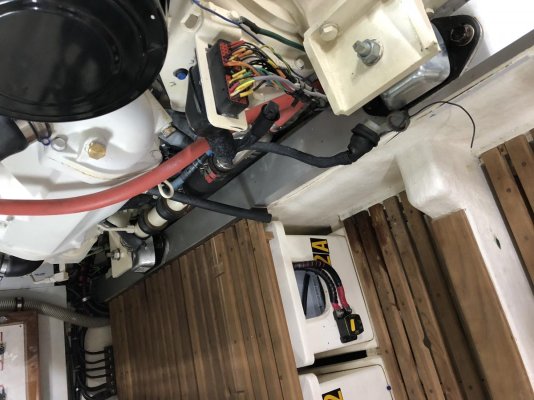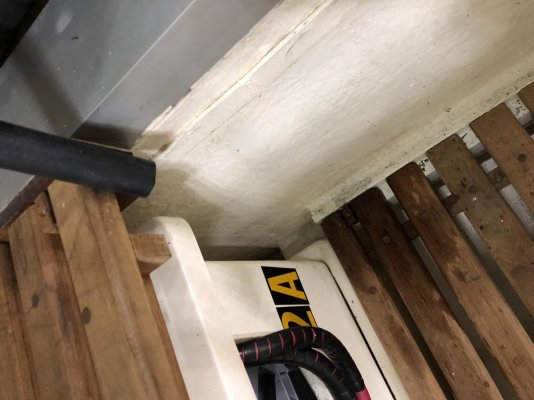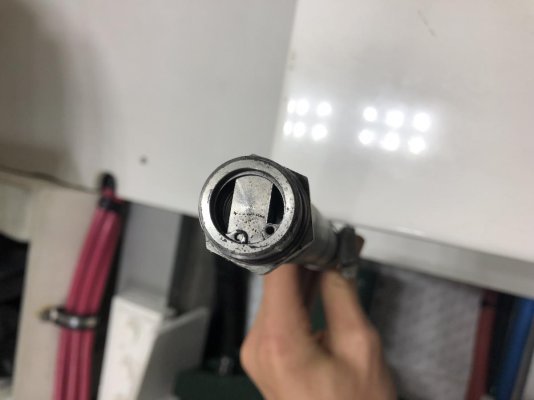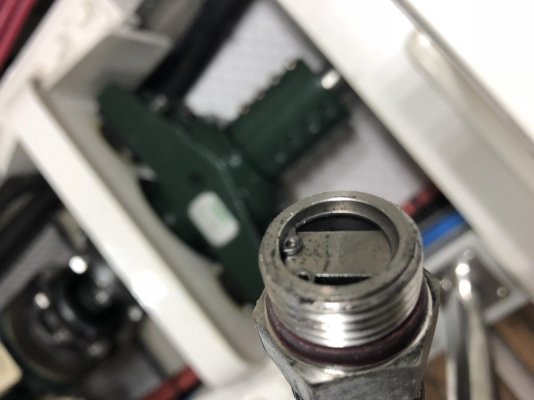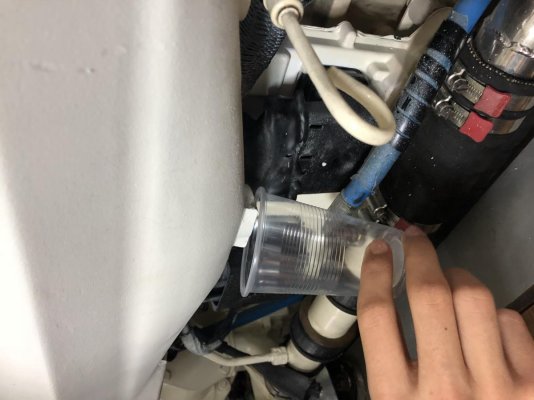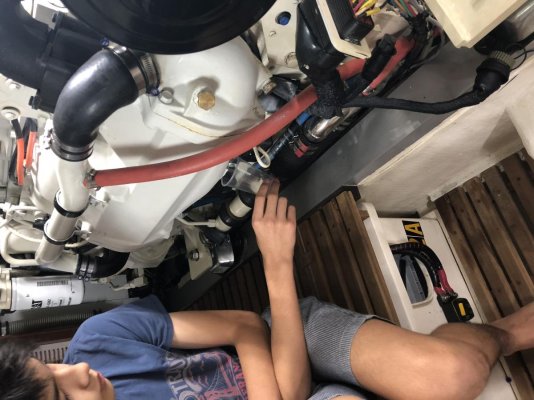BrisHamish
Senior Member
- Joined
- Apr 7, 2016
- Messages
- 223
- Location
- Australia
- Vessel Name
- Beluga
- Vessel Make
- Grand Banks 46eu 2006 hull#289
Good morning from Brisbane, Australia!
It was a cool-ish winter morning here, few rain squalls early on, but it calmed by 8am and I took my GB46 out for a sea trial with the prop guy. Ran at WOT, doesn’t quite make full rpm, need to take some pitch out. All good.
Upon my return to dock however I noticed some water at the bottom of the starboard aftercooler condensate drain. Port had a little as well, but it is harder to access. I have never seen any there before, but then I haven’t always looked either. I will try to attach phots. It was maybe a cup or so (say 500mls to 800mls). I tasted it, it was very slightly salty but nowhere near as salty as seawater (I did an immediate taste comparison!).
Thoughts? Could this just be a cold morning, and running engines at 100%, creating some condensate??
H.
It was a cool-ish winter morning here, few rain squalls early on, but it calmed by 8am and I took my GB46 out for a sea trial with the prop guy. Ran at WOT, doesn’t quite make full rpm, need to take some pitch out. All good.
Upon my return to dock however I noticed some water at the bottom of the starboard aftercooler condensate drain. Port had a little as well, but it is harder to access. I have never seen any there before, but then I haven’t always looked either. I will try to attach phots. It was maybe a cup or so (say 500mls to 800mls). I tasted it, it was very slightly salty but nowhere near as salty as seawater (I did an immediate taste comparison!).
Thoughts? Could this just be a cold morning, and running engines at 100%, creating some condensate??
H.

